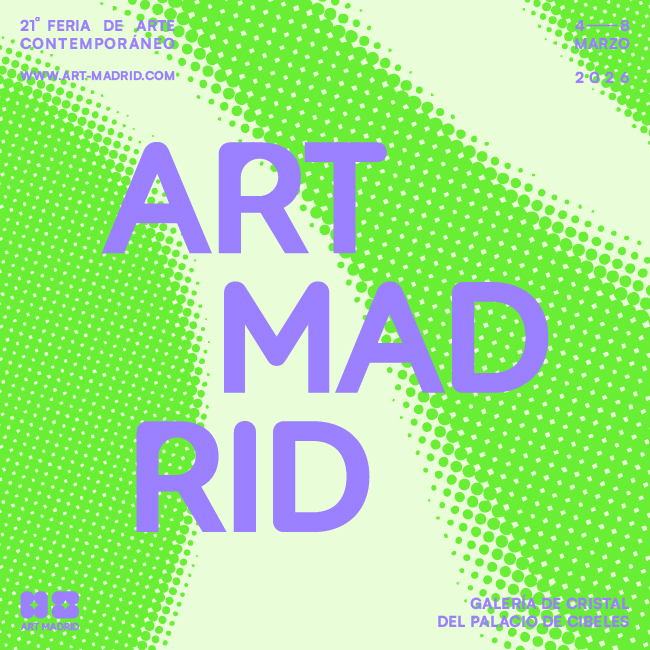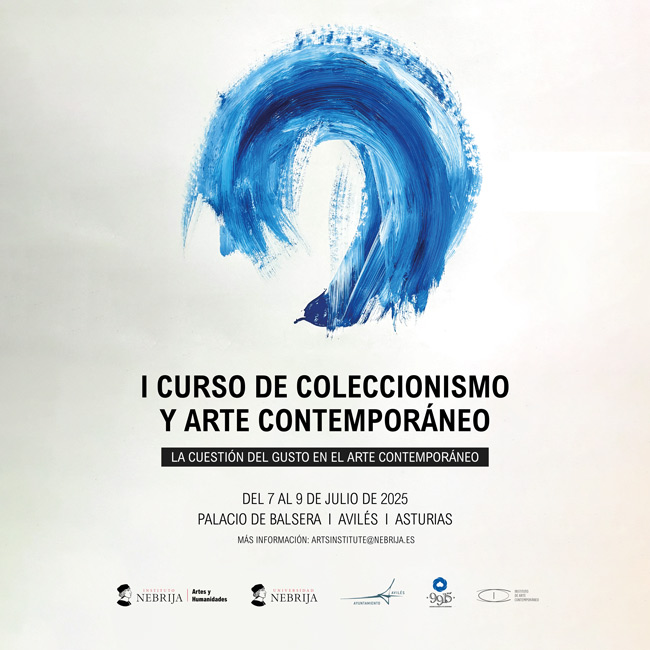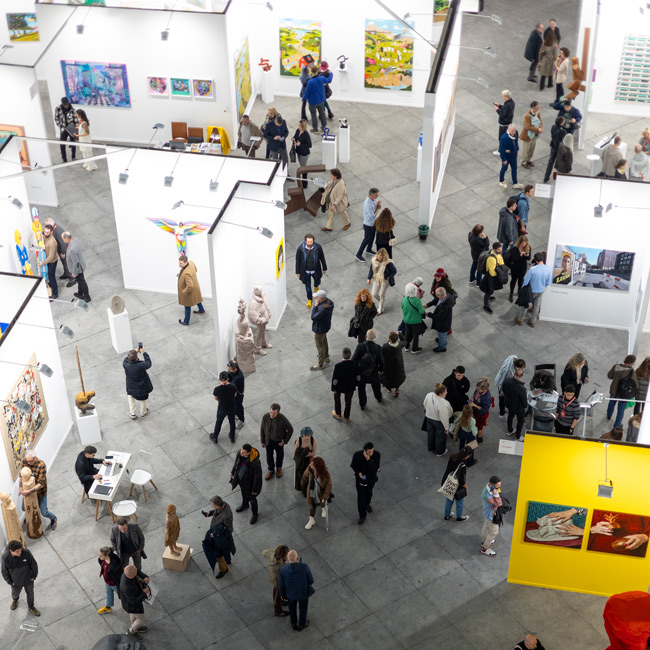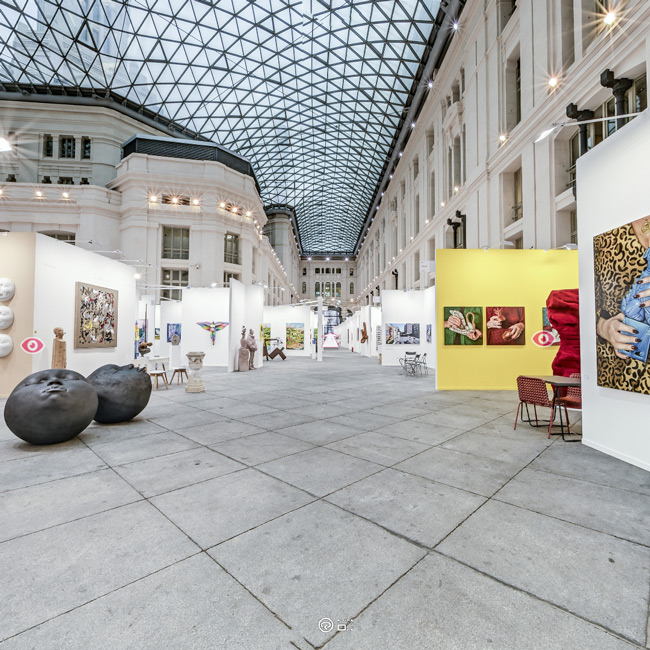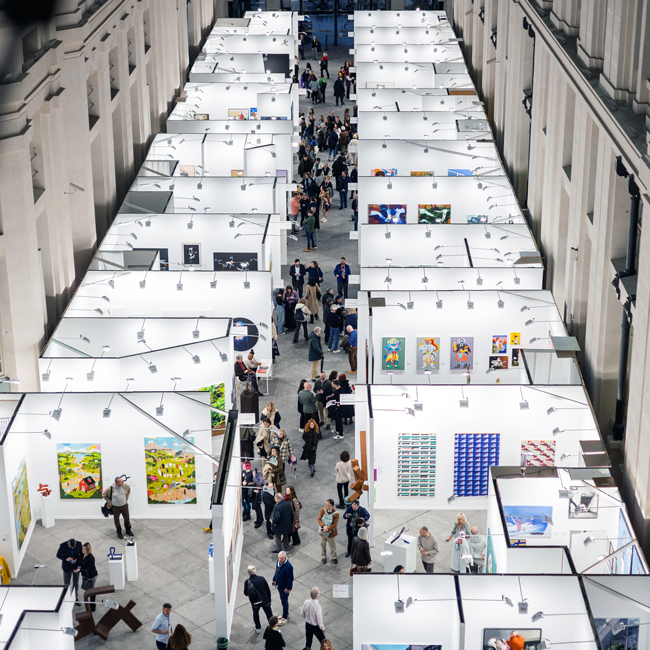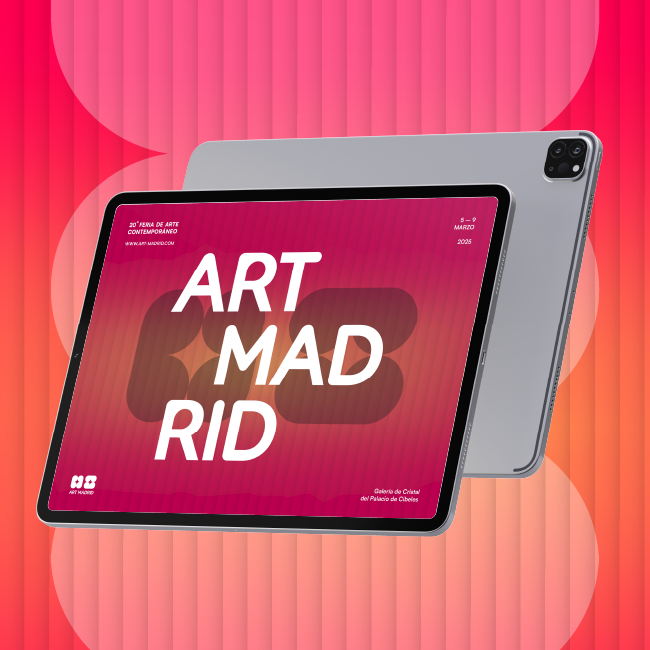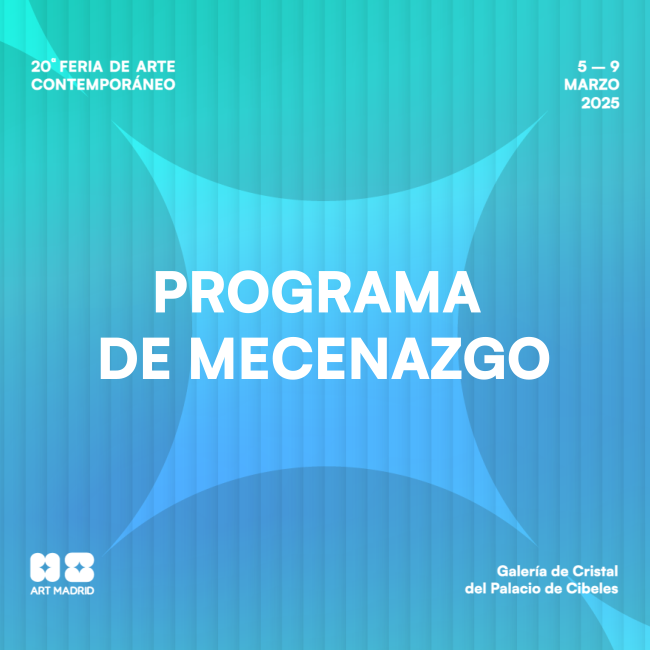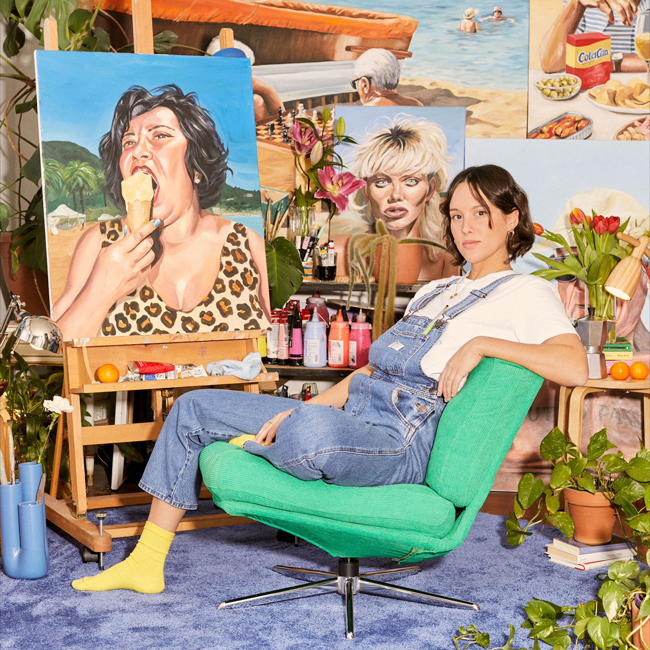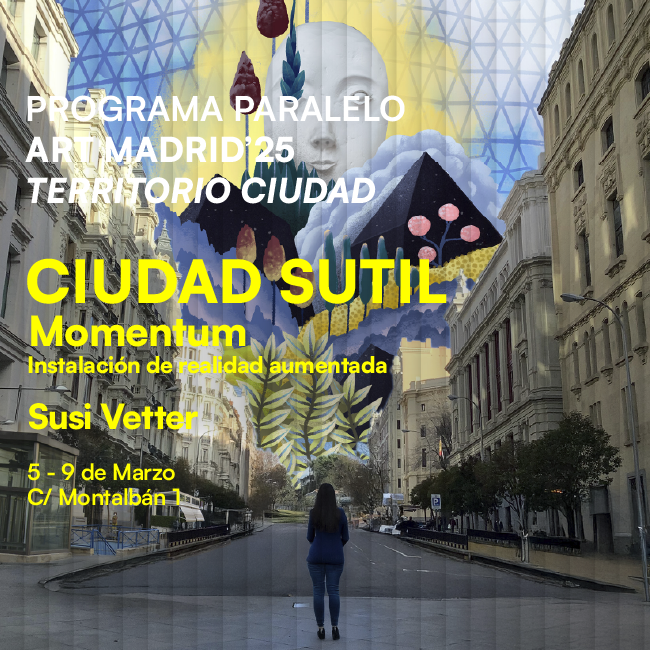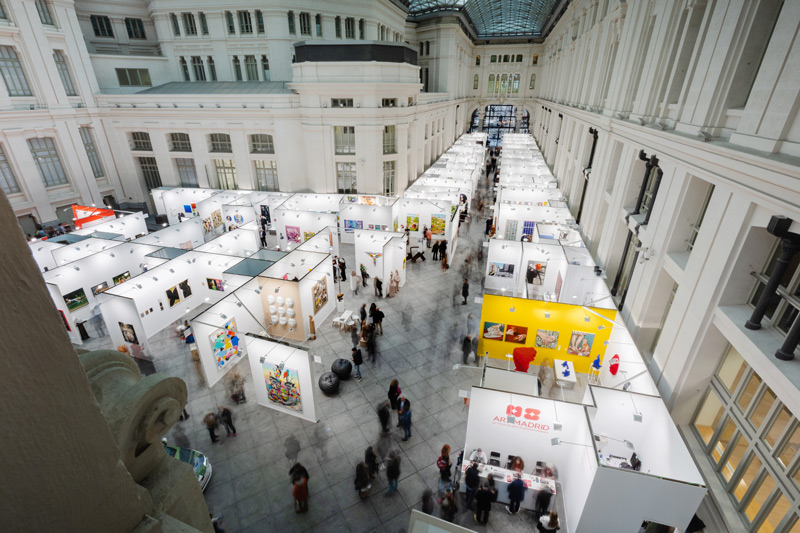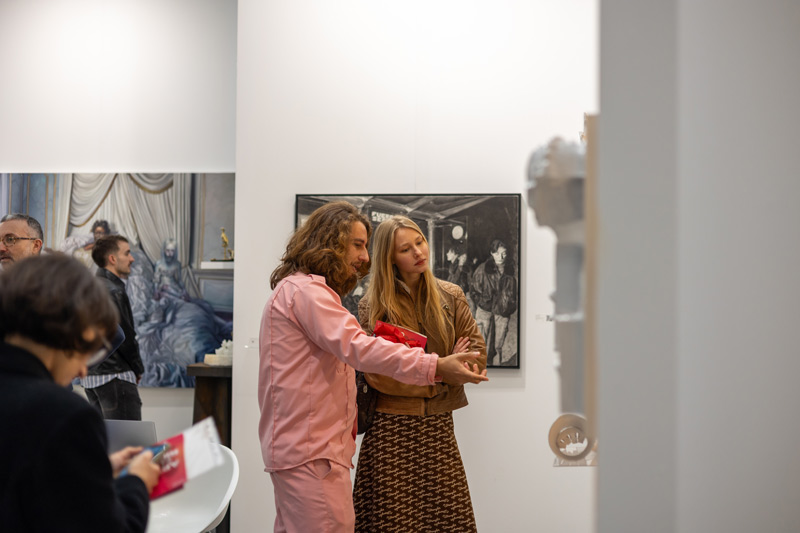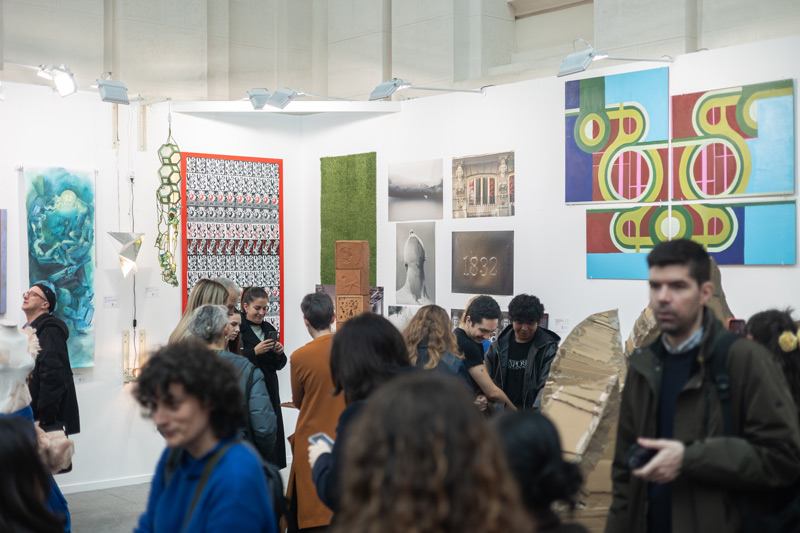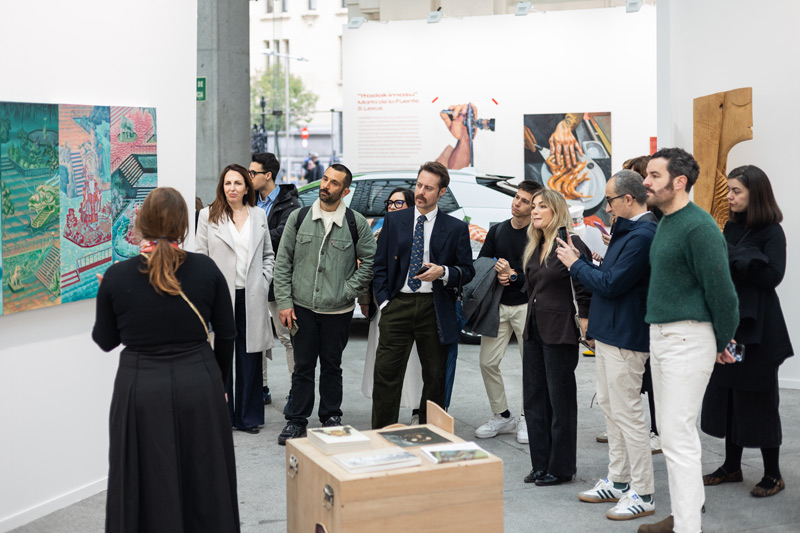ART, TECHNOLOGY AND NEW MEDIA WITH PATXI ARAÚJO IN ART MADRID’20
Apr 29, 2020
art madrid
Within the activities program "Art Madrid-Proyector’20" organiSed throughout last February, one of the most interactive actions was offered by Patxi Araújo at the Medialab Prado cultural centre. This artist offered a master class on February 12th, but also had a digital installation on the main facade of the building that was in operation for a month. We want to remember the result of this experience and offer you the possibility to enjoy the full master class online for all those who could not attend.
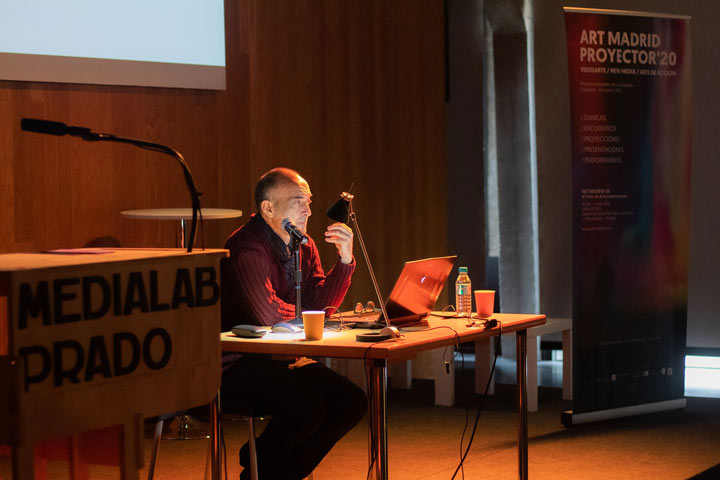
Patxi Araújo (Iruña, 1967) is an artist, researcher and teacher. He combines his academic work at the Faculty of Fine Arts of the University of the Basque Country with his artistic career. In the field of creation, Patxi was interested from the beginning in the technological application to the arts, in the search for an aesthetic that deals with concepts such as the human, the natural, the creation of spaces, the corporeal... through programming and the use of the software. His work has been recognised and selected in different biennials, festivals and video art and electronic experimentation competitions, such as "Share Festival XIII", Il Moderno Prometeo, Turin (2018); "Zinetika Festival", Bilbao (2018); "Life at the Edges", Science Gallery, Trinity College, Dublin (2018); “Osmosis Audiovisual Media Festival”, Taipei (2016), to name just a few.
True to his career, Patxi Araújo's master class entitled “All Prophets are Wrong” offered a vital and practical tour on the use of technology and computer programming in artistic creation. We are entering a hybrid terrain, where processes require knowledge contributed from different areas so that technological training and creative impulse merge into a field yet to be explored. Like any new language, it is a matter of mastering a technique, methods that depart from traditional artistic disciplines, not only because of their expression but also because of the type of training required. This is one of the essential characteristics of technological art, a fully up-to-date area that many authors come to because of their need to work with guidelines beyond the conventional. Likewise, the presence of technology and digital in our environment makes it natural for many to opt for these paths and consider projects that exceed the limits of physical support, allowing the creation of pieces that work with concepts such as the unpredictable, chance or randomness, philosophical questions that do not easily fit within the most classical art.
Patxi shared with us part of his experience and put into practice some of the technological processes that he uses in his work, in a fascinating session where we all could appreciate how to create through code and the final result achieved. In addition, one of the most complex parts of the process was revealed: the degree of abstraction with which the programming is carried out because the artist must at all times be aware of the aesthetic objective that he seeks, but often he does not come to see it until coding is well advanced. In this creative speciality, it is also essential to gain experience and be up to date with all the technological innovations applicable to the artistic world.

In addition to the master class, Patxi carried out a site-specific artwork for the main facade of Medialab Prado, equipped with a large 14 x 9 metre LED panel to display technological and digital projects. His proposal was an interactive literary-visual piece that required public intervention to activate its operation. With the title “Sherezade”, the work elaborated sentences in the scheme: article + noun + adjective, taking the words from a database of almost 2,000 terms. The combination of the 24 prepositions, 31 articles, 926 adjectives and 726 nouns activates when people and elements cross the square located in front of the Medialab building, thanks to a sensor camera that collects movements. In full operation, "Sherezade" shuffles the words on the screen, to offer a final phrase that can be as absurd and surreal as poetic.
¿Has visto ya la pieza de Patxi Araujo en la fachada de Medialab?
— Medialab Prado (@MedialabPrado) February 27, 2020
Se trata de una pieza interactiva que genera frases y oraciones en función de la posición del espectador frente al edificio tomando las palabras de un banco de textos elegidos por el autorhttps://t.co/1CAJ8TwZyq pic.twitter.com/5BFbpBNqNW
The work was inaugurated on February 12th, at the end of the master class, and remained installed until March 12th. A whole month in which the public was able to play automatic writing with “Sherezade”, as a true exercise in Dadaism in the 21st century.
We want to thank the support that Medialab Prado gave us at all times to host the activities of the parallel program. The centre defines as a citizen laboratory for the production, research and dissemination of cultural projects. In the words of its director, Marcos García, Medialab “characterises by offering a place for experimentation and collaborative creation of projects. It is what we call a 'citizen lab', a space in the city where neighbours can come together to develop an idea. Unlike traditional cultural centres –which can host an exhibition or a concert–, the idea here is that people come together to 'do'. There is always someone with a proposal and others who join it as collaborators”. And we were able to verify this philosophy during the development of the program, in which many regular users of the centre were encouraged to participate.

